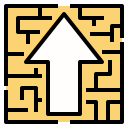How to Transition from Architect to Project Manager
Theme chosen: How to Transition from Architect to Project Manager. Step confidently from design leadership into delivery leadership with practical guidance, real-world stories, and a supportive community ready to learn from your journey and cheer you on.
Great design matters, but as a project manager your north star becomes measurable outcomes: scope delivered, risks contained, stakeholders aligned, and teams energized. Ask, document, and prioritize results over perfect drawings.
Mindset Shift: From Designer to Delivery Leader
Skills Map: What to Learn and What to Leverage
You bring coordination discipline, visual communication, and stakeholder facilitation. These strengths make you naturally strong at status storytelling, scope clarity, and multidisciplinary alignment across engineering, finance, operations, and compliance partners.
Skills Map: What to Learn and What to Leverage
Practice writing crisp scope statements, building risk registers with triggers, estimating costs with contingencies, and sequencing work. Learn baseline management, variance analysis, and change control so decisions become transparent, timely, and defensible.
Skills Map: What to Learn and What to Leverage
Architects persuade through drawings; PMs persuade through outcomes. Map stakeholders, define interests, surface constraints, and craft trade-offs. Use structured agendas, meeting notes, and follow-ups to transform debate into decisions everyone can live with.
Experience Bridge: Reframe Your Portfolio and Resume

Translate Project Stories into PM Language
Replace aesthetic descriptors with delivery verbs: coordinated, mitigated, negotiated, baselined, tracked, and delivered. Show how you turned ambiguous requirements into a clear plan, resolved conflicts, and drove consensus without sacrificing essential quality.

Metrics That Matter
Quantify impact: percentage schedule variance reduced, change orders prevented, cost savings achieved through value engineering, defect rates lowered, or turnaround time on RFIs improved. Numbers make your leadership concrete and portable across industries.

Interview Narratives that Land
Structure answers with situation, task, action, result. End each story with a lesson you now apply as a PM. Invite interviewers to probe deeper, demonstrating coachability and reflective practice from day one.
Education and Certifications Without Overwhelm
If you already manage complex projects, PMP validates experience. PRINCE2 suits process-focused environments. CAPM is a practical starting line. Select based on target roles, geography, and the hiring language your market speaks.

Volunteer for Planning and Risk Ownership
Offer to create a milestone plan, facilitate weekly standups, or build the first risk register. Share visible dashboards that track actions, owners, and dates. Colleagues will feel the calm of structured momentum.
Meeting Hygiene that Saves Hours
Send agendas with objectives, timeboxes, and pre-reads. Finish with decisions, owners, and deadlines. Publish notes within twenty-four hours. These habits quietly transform culture and highlight you as the de facto project manager.
Discovery and Baselines
Collect requirements, risks, assumptions, and constraints. Establish scope, schedule, and cost baselines. Confirm decision rights and change thresholds. Publish a one-page charter everyone understands and can reference without hunting through folders.
Delivery Rhythm and Visibility
Set weekly cadences, visual boards, and demo moments. Use short updates, clear blockers, and lightweight metrics. Celebrate small wins to build momentum and trust while steering calmly through inevitable uncertainty.
Personal Operating System
Protect focus with time-blocking, ruthless prioritization, and a simple task system. Maintain empathy, curiosity, and courage. Invite feedback, subscribe for upcoming templates, and share your lessons to help the next architect transition.
